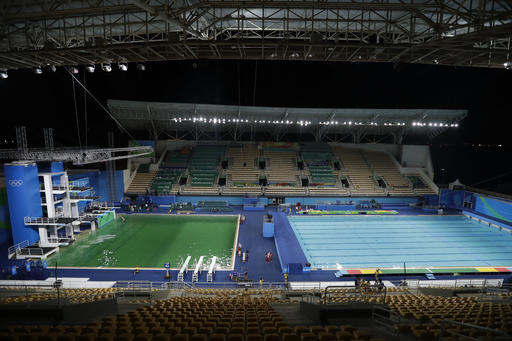-
Tips for becoming a good boxer - November 6, 2020
-
7 expert tips for making your hens night a memorable one - November 6, 2020
-
5 reasons to host your Christmas party on a cruise boat - November 6, 2020
-
What to do when you’re charged with a crime - November 6, 2020
-
Should you get one or multiple dogs? Here’s all you need to know - November 3, 2020
-
A Guide: How to Build Your Very Own Magic Mirror - February 14, 2019
-
Our Top Inspirational Baseball Stars - November 24, 2018
-
Five Tech Tools That Will Help You Turn Your Blog into a Business - November 24, 2018
-
How to Indulge on Vacation without Expanding Your Waist - November 9, 2018
-
5 Strategies for Businesses to Appeal to Today’s Increasingly Mobile-Crazed Customers - November 9, 2018
Rio’s infamous green diving pool closed
Diving competition at the Rio Olympics is expected to continue on schedule despite officials closing the pool in the morning to speed up treatment of its green water.
Advertisement
It has been one of the strangest stories of Rio 2016, with divers forced to compete in a pool that more closely resembled a pond.
Team GB diver Jack Laugher said he believed the ink has seeped into the water from plastic green boards around the pool.
“We reiterate what we’ve been saying all along – the water doesn’t offer any threat to the health of the athletes”, he said. FINA – the worldwide governing body for swimming, diving, water polo etc. – claims water tanks “ran out of some of the chemicals used in the water treatment process”. He said the decision was supported by world governing body FINA.
Now on Friday, the diving pool has been closed to training altogether – so as not to disturb the water and help it turn blue again.
Rio 2016 Organizing Committee spokesman Mario Andrada said they closed off the pool to athletes hoping to get in some practice dives in order to let the water remain still and let corrective chemicals do their work.
Andrada said officials were caught off guard by the pool’s deteriorating condition.
“Chemistry is not an exact science”, he said. He added that athletes had access to dry-land training in the morning, but conceded that “was not ideal”.
Advertisement
A change in alkalinity, algae and the lack of a chemical needed to treat the water have all been blamed for the green color of the water. “We can’t use too much chemicals in the water because athletes are training in it”, Andrada said.




























